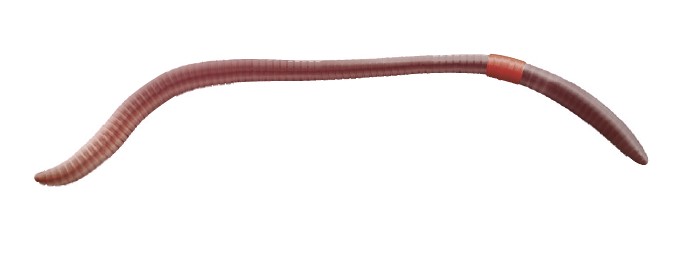- Home
- Knowledge library
- Soil macrofauna – earthworms
Soil macrofauna – earthworms
Earthworms engineer the soil environment, help with carbon cycling, improve water infiltration and plant productivity, and are an important food source for native birds.
Back to: The function of soil biology
How to encourage earthworm activity
- Add organic amendments to soil
- Leave crop residues, where possible
- Reduce tillage, where possible
What do earthworms tell us?
Earthworms are an indicator of soil health, being impacted by pH, waterlogging, compaction, tillage, rotation, and organic matter management:
- A good presence of earthworms across the field means their benefits are likely to be widespread
- High numbers of earthworms indicate the potential for significant benefits to plant productivity
- The presence of each ecological group indicates the potential for specific earthworm benefits such as carbon cycling, nutrient mobilisation, and/or water infiltration
Ecological groups of earthworms
There are up to 10 common earthworm species in agricultural soils, and these can be grouped into three ecological types: epigeic, endogeic and anecic earthworms – each group having a unique and important function.
Epigeic (litter-dwelling earthworms)

- Dark red-headed worms
- Small (< 8 cm) in size, typically about the length of a matchstick
- Often fast-moving
- Sensitive to tillage (detrimental effect)
- Benefit from organic matter management such as manure applications
- Play a role in carbon cycling
- Prey for native birds
Endogeic (topsoil earthworms)

- Pale coloured and green worms (not red)
- Small to medium size
- Often curl up when handled, and green worms may emit a yellow fluid
- The most common earthworm group found in arable fields
- Benefit from organic matter management such as manure applications
- Play a role in soil aggregation and nutrient mobilisation for plants
Anecic (deep burrowing earthworms)

- Dark red or black-headed worms
- Large (>8 cm), typically similar size to a pencil
- Make deep vertical tunnels up to 2 m
- Often found below surface earthworm casts or midden residue piles
- Feed at night, foraging the soil surface around their burrow for litter
- Commonly found in grassland but often absent from ploughed fields and where there is no surface litter
- Sensitive to tillage (detrimental effect)
- Benefit from organic matter management such as manure applications and straw return
- Deep burrows improve aeration, water infiltration and root development
Identifying adult and juvenile earthworms
Adult earthworms have a clearly developed saddle (reproductive ring), and juveniles do not. You may need to rinse worms with water to determine if a saddle is present. Size is not a good indicator of maturity as adult earthworms typically range in size from 2 cm to 15 cm, depending on species.

Useful links
See how soil organisms stabilise soil structure
Learn about different ecological groups of nematodes
Find out more about soil microbiology in agriculture
.jpg)
Topics:
Sectors:
Tags:

